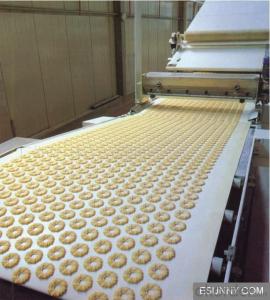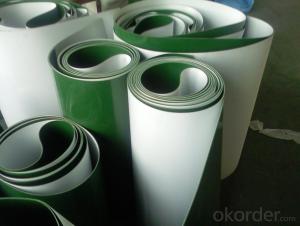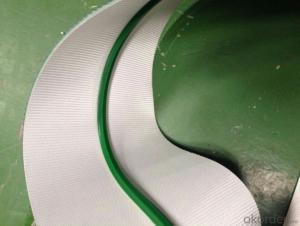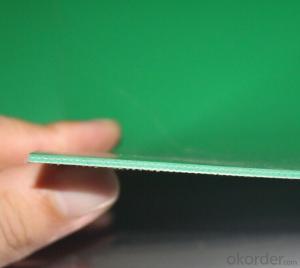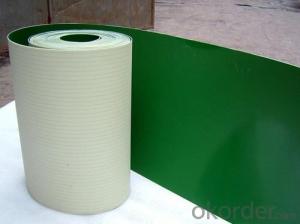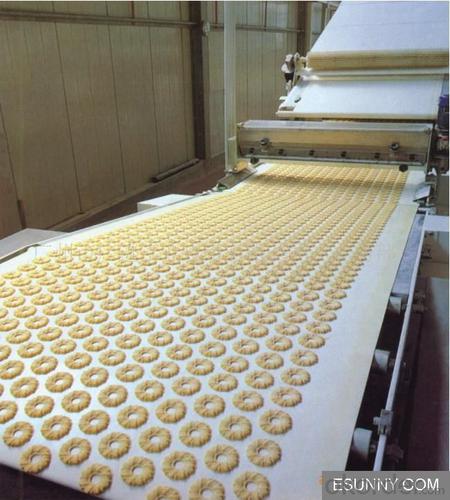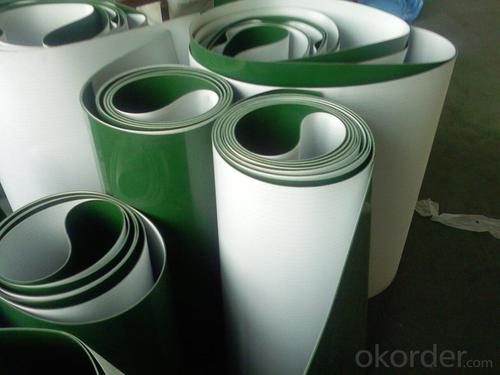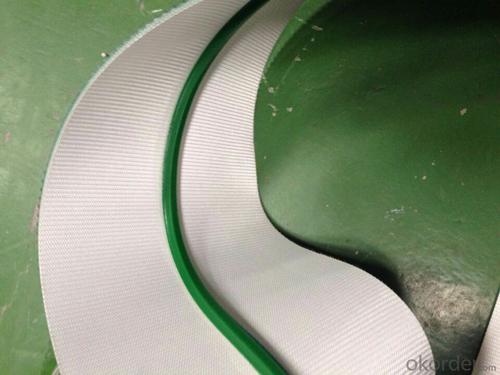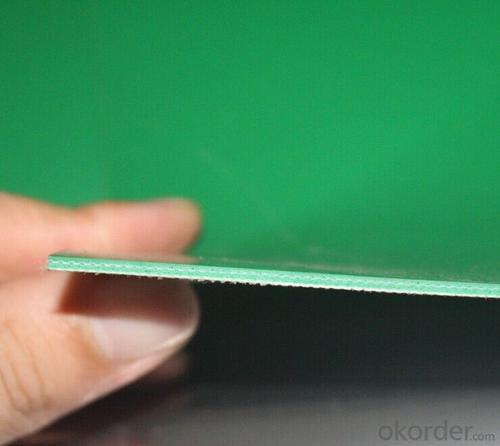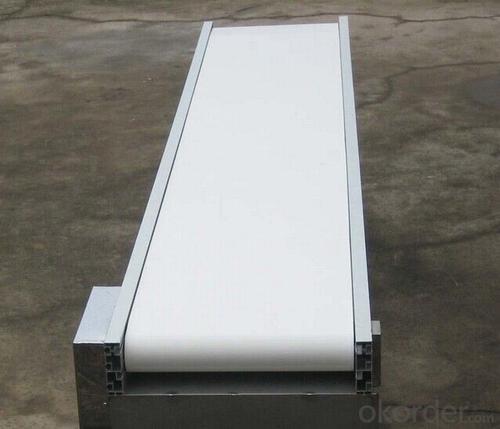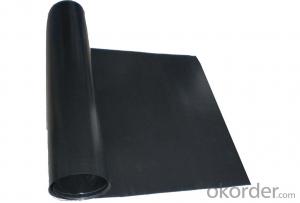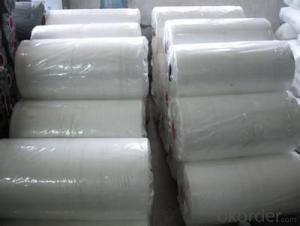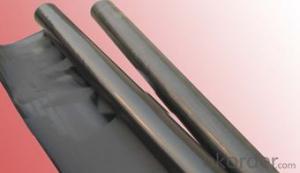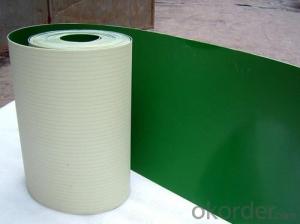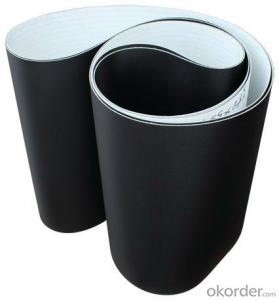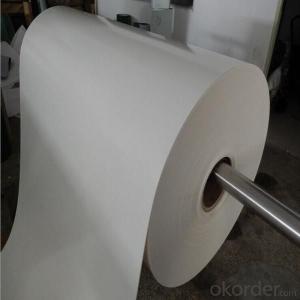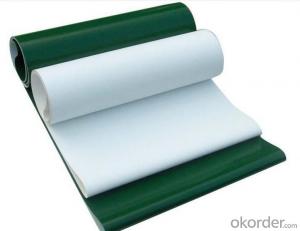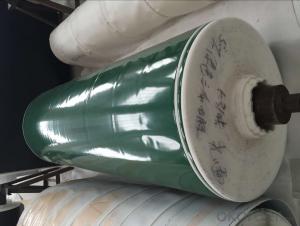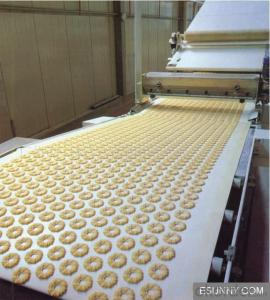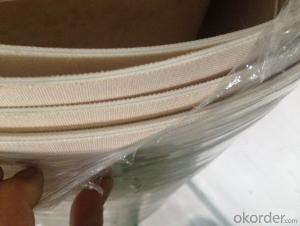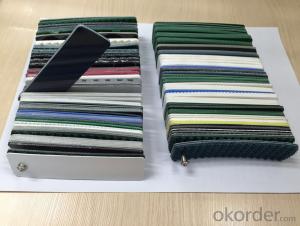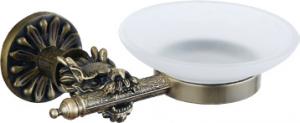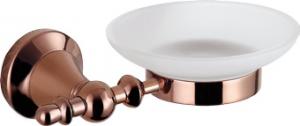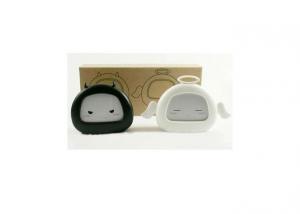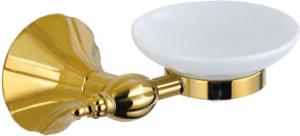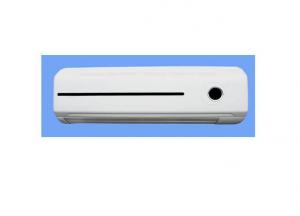Light Duty PVC&PU Conveyor Belting for Food Industry
- Loading Port:
- China main port
- Payment Terms:
- TT OR LC
- Min Order Qty:
- 100 m²
- Supply Capability:
- 5000000 m²/month
OKorder Service Pledge
OKorder Financial Service
You Might Also Like
Light Duty PVC&PU Conveyor Belting for Food Industry
Conveyor Belt Description:
PVC belts are made of PVC and polyester fabric for industrial light transporting, it is an essential part of the conveyor system.
With advanced coating machine and other excellent facilities, we are professionally producing PVC&PU light conveyor belts, which are extremely suitable for light industry such as beer industry, paper making industry, food industry, textile industry etc.
Different widths, patterns, colors, plies, thicknesss, profiles all are available, Conveyor belts of pvc with cold, abrasion resistance, antislip, anti-static features can suit different enviromental conditions.
Conveyor Belt Feature
1)Low stretch;
2)Low maintenance;
3.Anti-static;
4)Flexible;
5.Lightweight;
6)Impervious to moisture,acids,oils,gases,sunlight;
7)Excellent fastener holding;
8)Excellent resistance to tearing,peeling and impact;
9)Endless belt splicing;
10)Special wear resistant edge design;
Conveyor Belt Specifications
| Number of Ply | Thickness | Color | Remark |
| 1 , 2, 3, 4, 5, 6 ply | 0.6~11.5mm | white, black, green, dark green | customizable |
The products consists of solid woven fabric dipped in PVC paste and adding PVC cover which are combined together by vulcanizing.The belt is much suitable to service in the conditions needing fire resistant and anti-static properties as coal mines,power stations,chemical and metallurgy industries.
1)Non pressed PVC type is suitable for applications in dry conditions at a slope angle of no greater than 16 degrees. The belt is non-pressed with cover no more than 0.8mm.
2)Pressed PVC type,boh top and bottom covers are PVC, thickness of each side can be up to 4mm,the belt has much more advantages than non pressed PVC belt on impact resistance,water soaking,with longer service life,higher fastener holding.
Conveyor Belt Applications
Food industry
Logistic industry
Quartz rock industry
Artificial board industry
Marble industry
Tobacco industry
Printing & dyeing industry
Fitness industry
Conveyor Belt Photos

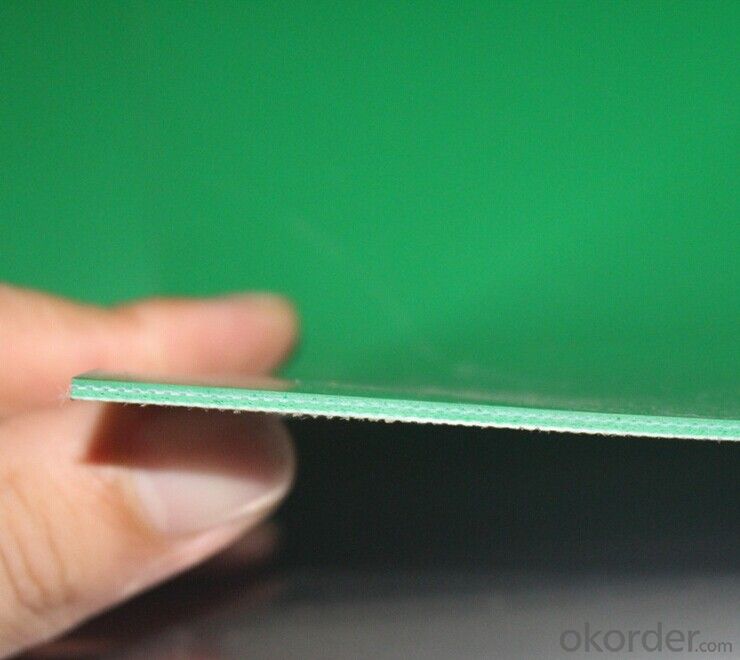

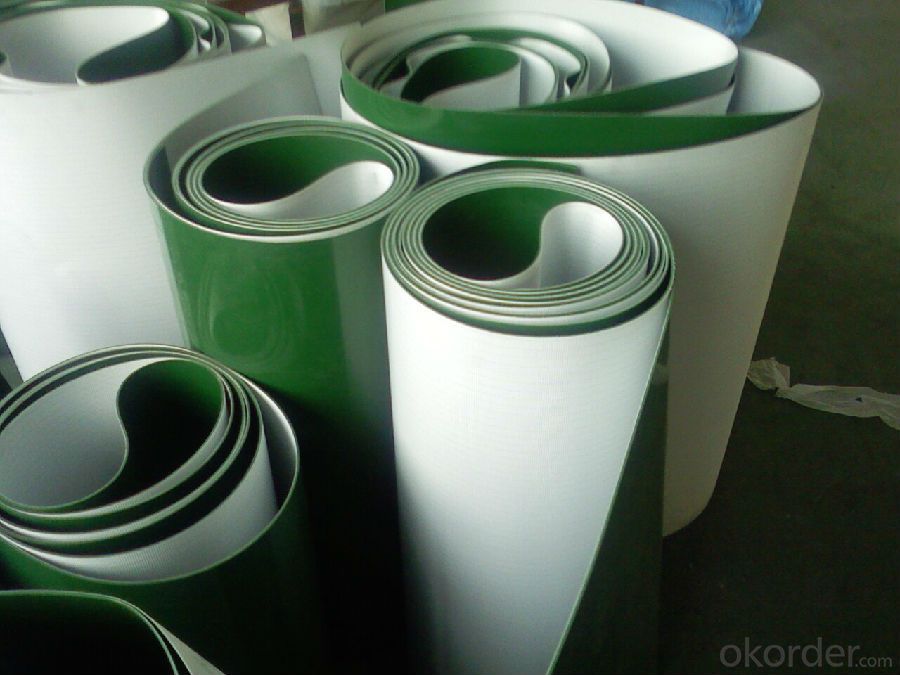
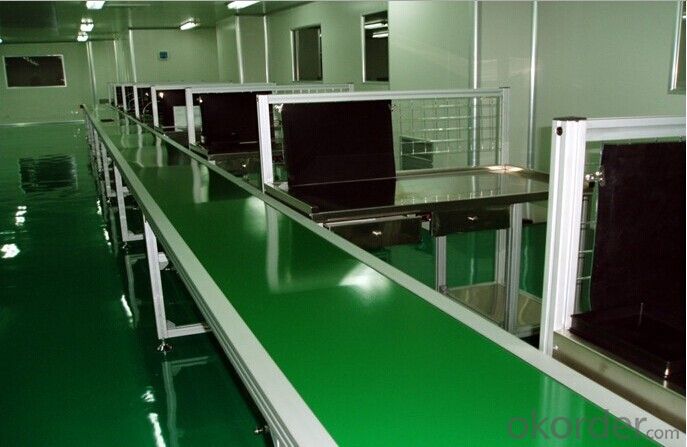
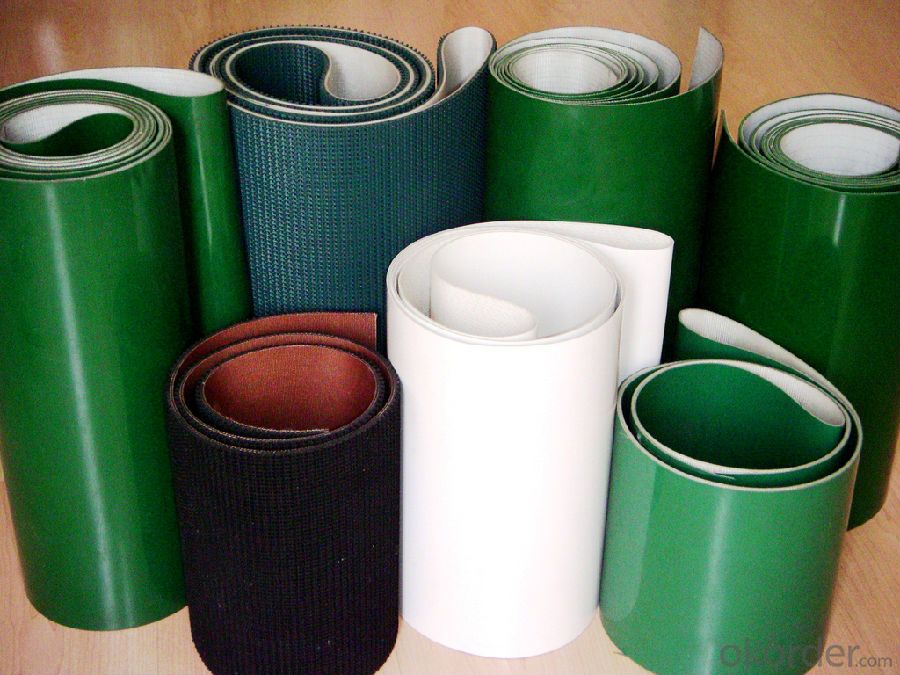
FAQ
Q: Can you do OEM?
A: Yes, we can do OEM products. It's no problem.
Q: How can I get some samples?
A: 1, We are honored to offer you samples. New clients are expected to pay for the courier cost, the samples are free for you, this courier cost charge will be deducted from the payment for formal order.
2, Regarding the courier cost: you can arrange a RPI (remote pick-up) service upon Fedex, UPS, DHL, TNT, etc. to have the samples collected; or inform us your DHL collection account. Then you can pay the freight direct to your local carrier company.
Q: How do you do regarding quality control?
A: Quality is priority? We always attach great importance to quality controlling from the very beginning to the very end:
1).All raw material we used are environmental-friendly;
2).Skilful workers care every details in handling the producing and packing processes;
3).Quality Control Department specially responsible for quality checking in each process.
Q.What are your payment terms?
A: Standard payment terms are 30%T/T,and balance upon the B/L copy .
L/C at sight is acceptable
Other payment terms can be negotiable.
If you want to find more details about the PVC treadmill conveyor belt, you could make an Inquiry in okorder.com. Okorder.com provides you the products with best price and quality!
- Q: Is chlorine dioxide corrosive to plastic products?
- Chlorine dioxide is a strong oxidizing agent which can corrode ordinary plastics.
- Q: How do you dye plastics?
- This method is basically the same as the extrusion dyeing method. The difference is that the proportion of the dye in the plastic is 10 times higher than that of the usual one. It can be used more frequently when the plastic is injected
- Q: Can olive nets be used in hilly or sloped orchards?
- Yes, olive nets can be used in hilly or sloped orchards. These nets are versatile and can adapt to different terrains, including hilly or sloped areas. They are designed to cover the trees and protect the olives from birds, pests, and extreme weather conditions, ensuring a successful harvest.
- Q: Electric kettle is plastic, okay?
- Plastic electric kettle itself is no harm, but some businesses in order to reduce production costs, to gain more profits, the use of non food grade toxic and harmful plastics manufacturing. Long term use of this kind of electric kettle will do great harm to the health of human body
- Q: Are there any specific guidelines for removing olive nets during harvest?
- Yes, there are specific guidelines for removing olive nets during harvest. These guidelines typically include carefully lifting the nets to prevent damaging the branches or fruits, shaking the nets gently to dislodge the olives, and ensuring that all olives are collected from the nets before removing them. It is also important to avoid excessive force or rough handling that could harm the olive trees or affect future harvests.
- Q: Can olive nets be used for other crops?
- Yes, olive nets can be used for other crops as well. Olive nets are designed to protect the crop from birds and other pests, so they can also be effective in safeguarding other fruit trees or plants from similar threats. However, it is important to consider the specific requirements of each crop before using olive nets, as certain plants may have different growth patterns or need specific netting systems.
- Q: Can olive nets be used in regions with a high bird population?
- Yes, olive nets can be used in regions with a high bird population. Olive nets are effective in protecting olive trees and crops from bird damage by creating a physical barrier that prevents birds from accessing the fruits. They are commonly used in areas with a significant bird population to deter them from feeding on the olives.
- Q: How do olive nets affect the yield of olives?
- Olive nets have a positive impact on the yield of olives. By placing these nets under the olive trees, they help catch the falling olives during the harvesting process, preventing damage and loss. This method ensures a higher percentage of olives are harvested and reduces wastage. The nets also provide shade and protection to the olives, preventing sunburn and maintaining the quality of the fruit. Overall, olive nets contribute to maximizing the yield and quality of olives during the harvest.
- Q: How do olive nets prevent fruit spoilage during storage?
- Olive nets prevent fruit spoilage during storage by providing a physical barrier that prevents external factors such as sunlight, insects, and birds from coming into contact with the olives. This protects the fruits from damage, contamination, and decay, ensuring their quality and freshness for a longer period of time.
- Q: Are there any specific safety precautions to be followed while using olive nets?
- Yes, there are several safety precautions to be followed while using olive nets. Firstly, it is important to ensure that the nets are securely installed to prevent any accidents or injuries. Care should be taken to avoid placing the nets near electrical wires or structures that may pose a risk. Additionally, individuals working with olive nets should wear appropriate protective gear such as gloves and safety glasses to protect against sharp branches or debris. It is also advised to have a spotter or a second person present to assist in case of any emergencies.
Send your message to us
Light Duty PVC&PU Conveyor Belting for Food Industry
- Loading Port:
- China main port
- Payment Terms:
- TT OR LC
- Min Order Qty:
- 100 m²
- Supply Capability:
- 5000000 m²/month
OKorder Service Pledge
OKorder Financial Service
Similar products
Hot products
Hot Searches
Related keywords
